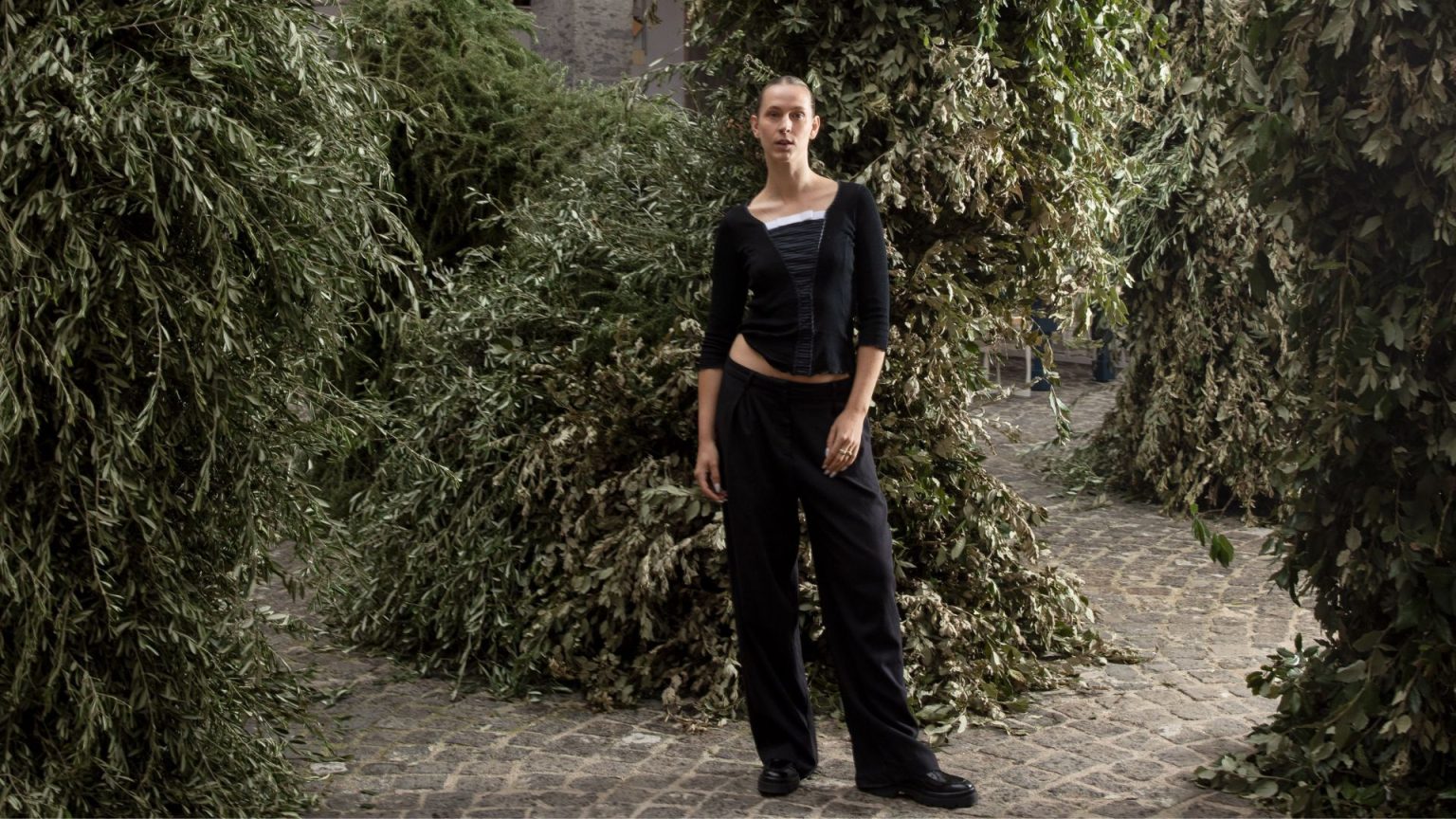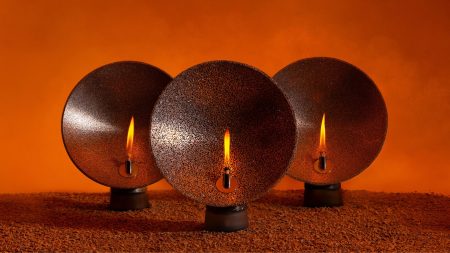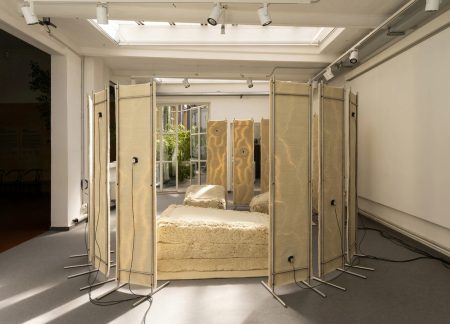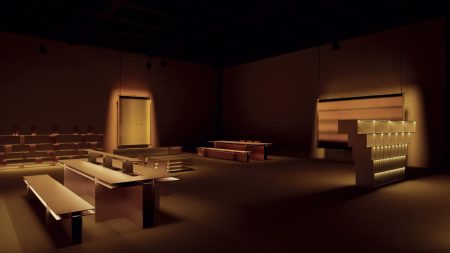Lilo Klinkenberg, the visionary founder of Studio Lilo in Berlin, stands at the forefront of botanical design and spatial art, crafting installations that transform spaces into vibrant, living masterpieces. Her work transcends traditional boundaries, blending the ephemeral beauty of natural elements with the structured formality of urban environments. Born from her deep connection to Berlin’s unique urban landscape, where the interplay between nature and city life inspires her aesthetic, Klinkenberg’s creations challenge perceptions and redefine contemporary floral design. Her approach, which emphasizes conceptual depth and visual ambiguity, has established her as a trailblazer in her field.
Klinkenberg’s journey into the world of botanical art began unexpectedly. After studying fashion design at the University of the Arts in Berlin, she found herself constrained by the limitations of working solely with clothing. Her desire to express creativity in a more spatial and abstract form led her to explore the possibilities of working with plants and spaces. This shift was solidified when she and her siblings opened a restaurant in Kreuzberg, where she began creating floral arrangements for events. What started as a practical task quickly evolved into a passionate profession, as Klinkenberg discovered a profound connection to the medium. She describes her transition as a natural evolution, one that allowed her to continue working with forms, albeit in a more abstract sense, by “dressing” spaces instead of bodies.
Berlin’s raw, urban aesthetic has profoundly influenced Klinkenberg’s work. The city’s unexpected intersections of nature and architecture—such as wildflowers blooming in forgotten corners or vines reclaiming derelict buildings—inspire her unique perspective. While Berlin may lack the overt beauty of cities like Paris, its rough, unpolished character offers a wealth of creative fodder. Over time, Klinkenberg has cultivated an eye for finding beauty in overlooked places, a skill that is central to her design process. Her visual library, deeply rooted in the urban landscape, continues to inform her work, blending the organic and the man-made in unexpected ways.
Klinkenberg’s practice is characterized by its unpredictability, a quality that both challenges and inspires her. For instance, when she was invited to create an installation for EDIT Napoli in October 2024, she chose to work with local tree species, allowing the season and the landscape to dictate her materials. Just days before the event, she discovered the specific branches and foliage that would form the heart of her piece—a lush cascade of green tones celebrating the generosity of Neapolitan autumn. This approach, which relies on the immediacy of her surroundings, is a hallmark of Studio Lilo’s work. The unpredictability of working with natural materials adds an element of risk, but it also fosters creativity and forces her to remain adaptable.
In addition to her event-based work, Klinkenberg has increasingly turned her attention to creating more permanent installations. Durability has become a central theme in her recent projects, as she seeks to challenge the ephemeral nature of botanical art. For her exhibition “Is This Even Real?” in Berlin, she developed six sculptural pieces that explored the tension between the natural and the manufactured. By preserving organic materials through techniques like coloring and specialized treatments, Klinkenberg achieved a level of longevity that allowed her to push the boundaries of her medium. These works, designed to endure, reflect her growing interest in creating art that can be experienced over time, offering a more sustained dialogue between the viewer and the installation.
While Klinkenberg’s work is deeply rooted in her environment, her approach to design is both intuitive and deliberate. She describes her creative process as being shaped by the specific context of each project, whether it’s a client-commissioned piece or a self-initiated work. For client projects, she often begins with a mood board, translating themes or concepts into a botanical language. The space itself plays a crucial role, influencing her choices of shape, color, and texture. Klinkenberg seeks to create installations that interact meaningfully with their surroundings, whether through contrast or harmony, believing that this interplay is what makes botanical art truly compelling. Her work is not merely decorative; it is conceptual, often inspired by emotions or memories that surface during the creative process. While aesthetics are undeniably important, Klinkenberg’s ultimate goal is to evoke emotions and spark conversations, ensuring that her installations resonate on a deeper level.
Klinkenberg’s inspiration extends beyond the botanical world to include the sculptural forms of artists like Tony Cragg and Richard Serra, whose immersive, material-driven installations resonate with her own approach to design. However, her most profound source of inspiration remains nature itself—the intricate patterns, textures, and seasonal changes that define the natural world. Despite her lack of formal botanical training, Klinkenberg has developed a deep understanding of her medium through experimentation and observation. She describes herself as a continuous learner, embracing the trial-and-error process that has shaped her practice. This self-taught approach allows her to remain open to new possibilities, pushing the boundaries of what botanical art can be.
The challenges Klinkenberg faces in her work are as varied as the materials she uses. Winter projects, in particular, can be difficult due to the limited variety of plants and flowers available during the season. Sourcing materials in locations without access to local markets adds another layer of complexity, requiring creative solutions to logistical hurdles. Yet, Klinkenberg sees these constraints as opportunities for innovation, believing that creativity often thrives under pressure. Her ability to adapt and find beauty in unexpected places is a testament to her resourcefulness and artistic vision.
In reflecting on her work, Klinkenberg emphasizes the balance between aesthetics and concept. While her installations are undeniably visually striking, they are also deeply rooted in ideas and emotions. She strives for her work to be more than just decorative, seeking to create pieces that provoke thought and connection. This duality is at the heart of her practice, blending the tangible beauty of natural materials with the intangible power of concept. As Studio Lilo continues to evolve, Klinkenberg remains committed to pushing the boundaries of botanical art, exploring new ways to express her vision and engage her audience.









